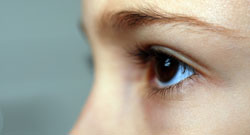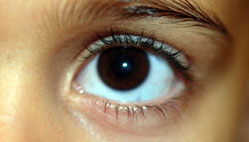Background:
Visual acuity is by far the most important diagnostic eye test.It determines whether one’s vision is normal or reduced, and if so, by how much.In contrast to its importance, visual acuity is currently determined by a manual test which has hardly changed in the past century. Perhaps the only change made to the original Snellen chart was the introduction, some 15 years ago, of a more standardized chart layout, called the ETDRS chart, with 5 letters in each row and a uniform interval between successive rows.
There is a large unmet clinical and market need for a better visual acuity test. The current manual test is highly inaccurate, with variability in the range of plus/minus 1-2 lines (10-20%). Consequently, a very large drop in visual acuity must occur before it can be identified with current examination techniques.
The market is in need of a faster, more accurate visual acuity test. Such a test should achieve the following goals: increase clinic flow via shortened testing time; result in more objective and standardized test results; minimize boredom of both patient and examiner; and, most important, provide much more accurate and reproducible test results. These would provide the ophthalmologist and optometrist an edge in diagnosis, and in the evaluation of any treatment response, whether medical, surgical or prescribed glasses.
Market
 In a typical eye clinic, caring for 50 patients, the visual acuity test is repeated 100 times daily, often implying that a significant amount of staff time is devoted to this task. Worldwide, millions of visual acuity eye examinations are performed yearly. Computerizing this important test opens a huge market including each examination room of every ophthalmologist and optometrist, giving this technology the potential to become, by far, the most prevalent diagnostic ophthalmic device.
In a typical eye clinic, caring for 50 patients, the visual acuity test is repeated 100 times daily, often implying that a significant amount of staff time is devoted to this task. Worldwide, millions of visual acuity eye examinations are performed yearly. Computerizing this important test opens a huge market including each examination room of every ophthalmologist and optometrist, giving this technology the potential to become, by far, the most prevalent diagnostic ophthalmic device.
The Innovation
Our patent-pending invention provides a method, algorithm, hardware and set-up for a fast, accurate and reproducible test of visual acuity. We propose that this approach may eventually become a new standard of care.
 Via a computer-based system, incorporating a highly efficient visual acuity algorithm, the current inefficient manual chart-based examination will be replaced by an automated, standardized task, utilizing a fine-tuned algorithm incorporating real-time data analysis, maximizing both speed and accuracy. This PC based product will include a high-contrast computer monitor, a remote control pad and our proprietary patented threshold method and software, all packaged in an easy to use diagnostic product.
Via a computer-based system, incorporating a highly efficient visual acuity algorithm, the current inefficient manual chart-based examination will be replaced by an automated, standardized task, utilizing a fine-tuned algorithm incorporating real-time data analysis, maximizing both speed and accuracy. This PC based product will include a high-contrast computer monitor, a remote control pad and our proprietary patented threshold method and software, all packaged in an easy to use diagnostic product.
Contact
Stuart Bernstein
Business Development, Medical Devices
Tel: +972-2-6777906
Email: stuart@hadasit.co.il
This link will lead you to the: Hadasit web site

